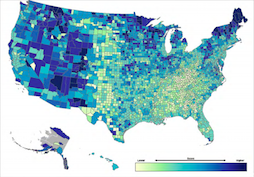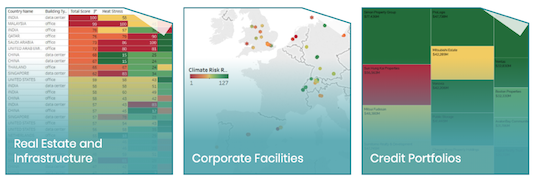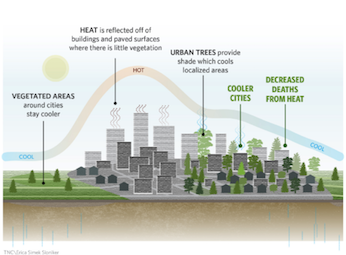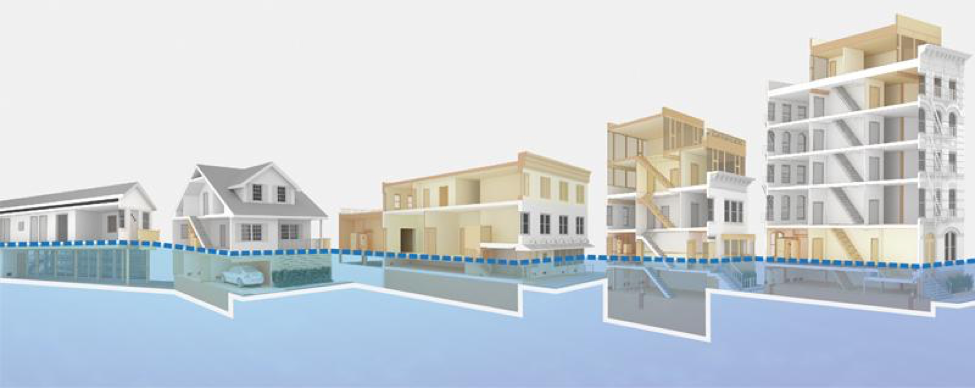How to Invest In Climate Resilience Without Overspending
By Nicole Schlabach
Resilient buildings are appealing more and more to CRE investors due to recent extreme weather events. A climate or disaster-resistant building will hold up under a serious storm’s pressure, and it will require less costly maintenance work in the case of a disaster. But, do you really need to invest in these features?
Depending on where your property is located, the risk of a destructive climate event may not be great enough to justify the investment. Climate risks differ for properties depending on the climate and their existing operations.
If done incorrectly, adapting your building for climate resilience could be a costly endeavour with little-to-no additional benefits. However, if done strategically, you could reap multi-faceted benefits.
If you’re considering investing in climate-resilient features for a commercial property, take these steps to avoid spending more than you need to.
1. Assess the Risks of Your Market Before Investing
The “anything could happen” mindset is a surefire way to overspend when it comes to climate resilience. You should find out if your property is at risk before you adapt your structure for extreme weather.
Some properties are more at risk for destructive weather events than others. The level of risk you face will determine the level of investment you should make.
For instance, the mayor of New York City recently called for a $500 million project to protect lower Manhattan from floods. Considering the damage caused by Hurricane Sandy, this is a justified endeavour.
There are resources available for you to determine if your property is at risk. In 2017, the EPA released a report of high and low-risk counties across the United States mapped by climate resilience.
Higher risk areas, in dark blue, are expected to be more physically impacted by extreme weather.

The EPA released the Climate Resilience Screening Index with the aim of calling high-risk areas to action. Each report considers other factors such as poverty, building codes, and the age of infrastructure.
If you live in a higher-risk area, you should investigate why, and decide whether an action is needed.
The private sector has also taken an interest in mapping the potential results of destructive weather. Startups, such as Four Twenty Seven, have begun providing risk analyses for real estate stakeholders.
The company analyzes current and long-term property risks and offers resilience strategies to reduce damage.
The company provides a variety of analytics for both financial and corporate stakeholders so they can make data-driven decisions about their infrastructure.

The analytics are readily available on-demand, and they’re designed to be quick-and-easy to understand.
Climate research paired with location-specific data can help you decide whether resilient features are needed for your building. You should maintain a sceptical, yet informed mindset to make the best decisions for your property.
2. Choose a Big-Picture Approach
Don’t isolate your resilience strategy from your other property goals. If you decide to enhance the resilience of a property, it should fit within a greater value-add.
Yes, resilient features mitigate the risk of extreme weather. But, if done right, they can also improve factors like energy efficiency and the tenant’s experience.
For example, if your property is at risk for extreme heat, cultivating resilience can also provide multifaceted benefits.
Cooling your property could mean planting hardy, native vegetation that absorbs heat near the structure. Planting trees, for example, provides a cooler outdoor space for tenants in high-heat areas.

In addition to the health benefits of shade, trees secure soil in place, which decreases flood risks. Strategically located vegetation can cool the interior of urban properties, which can reduce air conditioning costs.
By responding to the risk of extreme heat, a strategic investor can also enhance their tenants’ wellness while saving costs.
When it comes to climate resilience, prospective investors should avoid a narrow mindset to reap the most benefits possible. If your property is at a low-to-moderate risk of extreme weather, the other value-adds may make the building adaptations worth it.
3. Adapt Your Infrastructure for the Right Climate
After consulting climate data, you may decide your property is at risk of damage. However, that doesn’t mean you should start adapting your building right away.
When you simply try to strengthen the durability of your building, you spend unnecessary funds. The research isn’t over, yet.
Now, it’s time to create a plan that’s specific to your needs.
First, decide which risks you face. Climate impacts could include temperature changes, sea-level rise, precipitation patterns or storm patterns, according to an OECD report.
You could require “grey” infrastructure changes, “green” landscape adaptations, or simply regulatory tactics to keep employees safe.
For properties at risk of flooding, resilient plants, permeable paving surfaces, or seawalls could be worthwhile features to consider.
The Department of City Planning for New York City advises you to identify your flood elevation, which will indicate the best practices for floodproofing.

Your decision-making factors should include your building type, the height of your lowest floor, as well as local floodplain regulations.
If your property is at risk for extreme storm patterns, a simple action like implementing a tree pruning program near transmission lines could prevent damage.
Or, you may decide that emergency preparedness training is all that’s needed to keep your assets and tenants safe. Your building may only require one — or none — of these strategies.
While there are many options available, there’s no need to feel overwhelmed. You can use the EPA’s climate adaption strategies to start your research.
The more you examine your properties’ needs, the easier it will be to decide on the most important tactics.
Construct a comprehensive plan before you build anything else. That way, you’ll strengthen your property’s resilience without paying for unnecessary features.
Create A Precise Plan; You Don’t Need It All
When it comes to planning for climate resilience, a well-executed conservative approach can be more effective than a costly endeavour.
In the first place, don’t assume your building needs adaptations. Take advantage of the resources available to access the risks your area faces. An emergency plan or new vegetation could be enough to mitigate risks.
Make sure your plan responds to your property’s specific environment. The further you drill down your objectives, the more effective your approach will be. Along the way, consider how resilient features could provide benefits beyond climate adaptation.
Your tenants and property owners will thank you for investing in resilience the smart way.
 Nicole Schlabach is an Editorial Associate for Clutch. She focuses on real estate and sustainability research and content efforts.
Nicole Schlabach is an Editorial Associate for Clutch. She focuses on real estate and sustainability research and content efforts.
Click here to read more articles by Clutch.co
Thank you for reading. Please drop a line and help us do better.
Regards,
The CSR Journal Team












